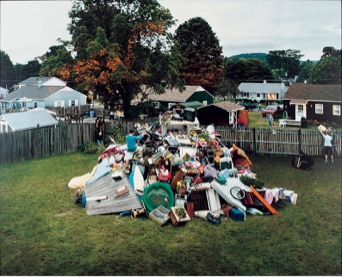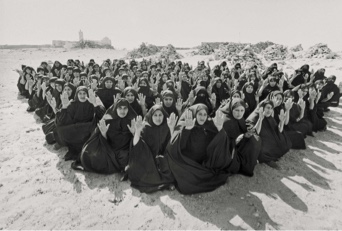Shared Space: The New Era (1987-2010) acts as a time capsule of our age, traversing our social landscape from 1987 to the early twenty-first century through photographs, videos and other time-based media. In 1987, Presidents Ronald Reagan and Mikhail Gorbachev signed the Intermediate-Range Nuclear Forces Treaty (INF), and that year serves as this exhibition’s point of departure. Along with the fall of the Berlin Wall in 1989 and the attendant collapse of the Soviet Union, these events marked the end of the Cold War and ushered in a new era of globalization. At the same time, the Internet was on the verge of widespread usage and would be commercialized in 1995. Through Shared Space, we see artists as they grapple with the complexities of these revolutionary times.
The artists included in this exhibition hail from nine countries, including the United States, Canada, the Czech Republic, Germany, the Netherlands, India, Iran, Italy, Mexico and Switzerland. Each artist interprets this period of transition from his or her unique perspective. Some of the artists document derelict buildings that once reflected modernist utopian ideals but, now neglected, reveal the failure of those dreams, as seen in the works of Thomas Ruff and Günther Förg. Förg’s photograph Villa Malaparte, though documenting a building that is “out of time,” offers us the promise of something better. His images act as a segue from the Cold War into the new era of globalization, imbued with a borderless, egalitarian vision as it looks beyond the structure and out into the openness.
Many of the artists, including Hans Aarsman, Wout Berger and Olivo Barbieri, document vast landscapes shot from a great distance and photographed from above, as if observed from an aircraft, hovering over a new world. Masses of people are caught congregating in public spaces as distant as Vietnam, the Netherlands and Los Angeles. These pictures signify a move from the local or specific to the global. Together, these international landscapes depict our global village, reminding us simultaneously of our similarities and differences.
Ken Fandell and Ben Gest employ new digital media to express some of the implications of our fast-paced global, electronic age. Fandell photographed the sky above his home each day for eight months and then blended the photographs together digitally to create a new, virtual sky – one in which time and space are collapsed. His work illustrates our ability to be in several places and times at once via the Internet. For Gest, the space is a domestic one in which family members, as depicted in Jessica & Samantha, are in very close proximity but appear completely detached from one another. The painful disconnect in Gest’s work echoes the sentiment that our global village is replete with difference and distance.






